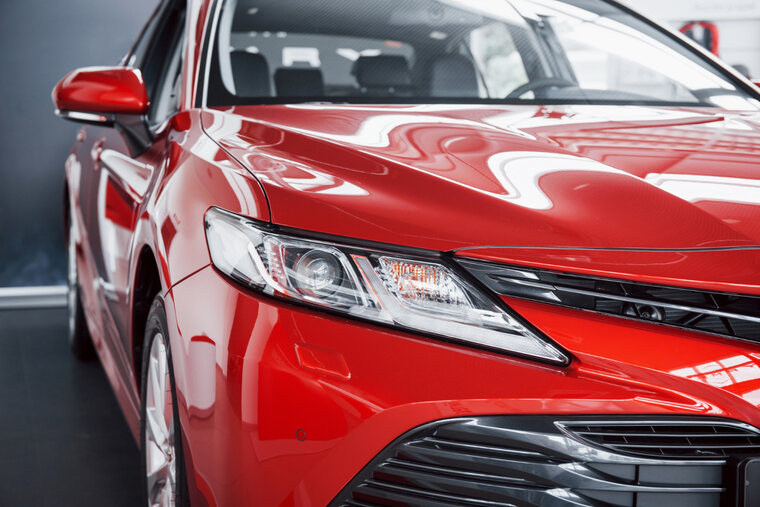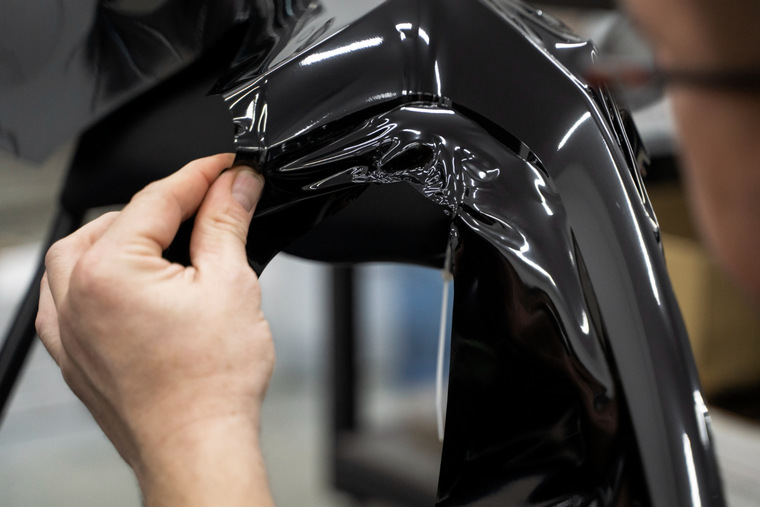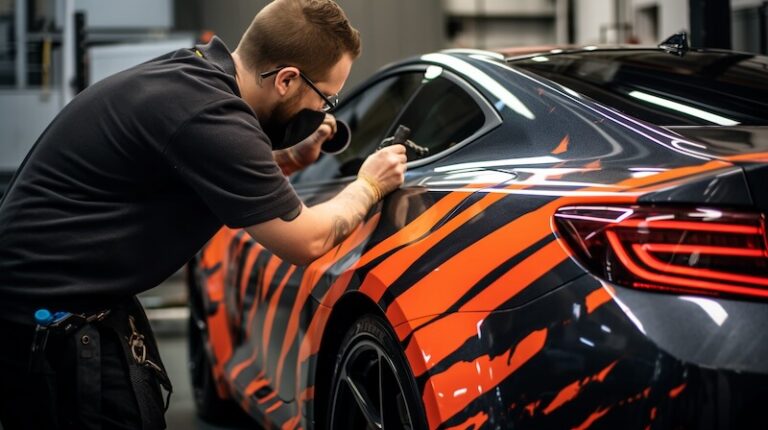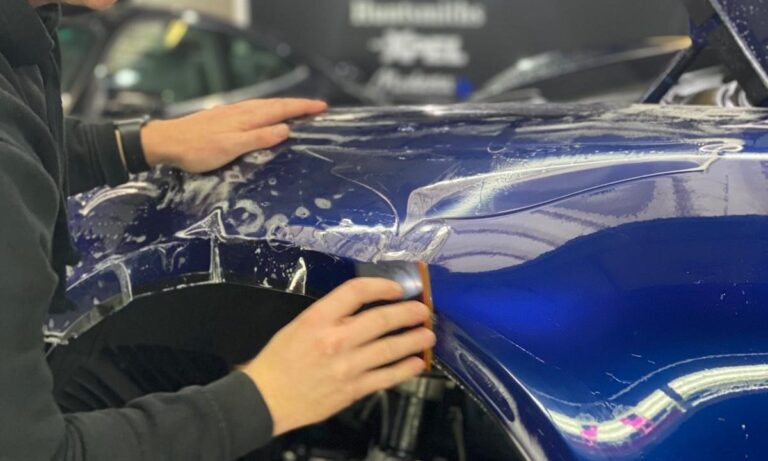Car wraps have become a popular way to give your vehicle a fresh look or protect its original paint from wear and tear. These colorful vinyl wraps can transform your car’s appearance while offering an extra layer of protection. However, what goes up must eventually come down, and when it comes to removing car wraps, XPEL PPF experts say it’s not as simple as just peeling them off. That’s where DIY car wrap removal comes into play.
1. Rushing the Process
Rushing through the car wrap removal process is a common blunder that often leads to avoidable mishaps. XPEL PPF experts in Danbury, CT, emphasize the importance of patience in this crucial step.
Impatience and Its Consequences
Impatience can manifest in several ways during car wrap removal, and each one can have detrimental effects on the outcome:
Tearing the Wrap
Trying to remove the car wrap hastily can result in tears or damage to the vinyl, even for experienced XPEL PPF experts. This not only mars the aesthetics but also complicates the process.
Adhesive Residue
An impatient approach may leave behind stubborn adhesive residue on the vehicle’s surface. Removing this residue can be a tedious task that requires extra time and effort.
Frustration
Rushing through the removal can lead to frustration and stress, making the entire process less enjoyable and potentially more error-prone for even the most skilled xpel ppf experts.
Tips for Practicing Patience
So, how can you cultivate patience during car wrap removal?
Start Early
Begin the removal process early in the day when you have ample time at your disposal. Rushing is often a result of feeling pressed for time.
Work in Sections
Divide the task into manageable sections. This allows you to focus on one area at a time, reducing the urge to rush through the entire process.
Use Heat
Employ a heat gun or a hairdryer to your advantage. Gently heating the wrap as you go along softens the adhesive, making it easier to peel off without tearing.
Slow and Steady Wins the Race
Remember the old adage. When pulling off the wrap, maintain a deliberate, slow, and steady pace. This minimizes the risk of tears and ensures thorough removal.
2. Using Incorrect Tools
One of the most critical aspects of DIY car wrap removal is having the right tools for the job. Using incorrect tools can quickly turn your project into a nightmare. XPEL PPF experts stress the significance of selecting the appropriate tools to ensure a smooth and damage-free removal process. Discovering the best way to remove vinyl wrap involves a combination of patience, heat application, and using the right tools, ultimately ensuring a successful and hassle-free removal.
Tools Matter
Using tools that are not designed for car wrap removal can lead to a range of problems, including:
Surface Damage
Sharp or abrasive tools can inadvertently scratch or gouge your vehicle’s surface, causing costly damage that may require professional repairs.
Wrap Tears
Inexpert use of tools with hard edges can easily puncture or tear the vinyl wrap, making it challenging to remove cleanly for even the most skilled xpel ppf experts. When tackling a stubborn vinyl wrap, a high-quality wrap removal solvent can be a game-changer, making the process more efficient and less labor-intensive.
Inefficiency
Using incorrect tools can slow down the removal process, making it more labor-intensive and time-consuming than necessary, even for experienced xpel ppf experts.
Choosing the Right Tools
Avoiding this mistake is all about selecting the right tools from the get-go:
Plastic Pry Tools
Invest in quality plastic pry tools specifically designed for car wrap removal. These tools are gentle on your vehicle’s surface and minimize the risk of damage.
Plastic Razor Blades
Opt for plastic razor blades instead of metal ones. Plastic blades effectively remove the wrap without scratching the paint underneath.
Microfiber Cloth
Keep a microfiber cloth handy to wipe away any adhesive residue left behind. It’s soft and won’t harm your vehicle’s finish.
Heat Gun or Hairdryer
While not a traditional tool, a heat gun or hairdryer is invaluable for softening the adhesive, making the wrap easier to peel off. A reliable vinyl wrap remover is an essential tool for DIY enthusiasts looking to refresh their vehicle’s appearance or switch to a new design.

3. Neglecting Proper Surface Preparation
Neglecting to prepare the vehicle’s surface adequately before embarking on a car wrap removal project can lead to complications down the road. XPEL PPF experts emphasize the importance of proper surface preparation to ensure a smooth and hassle-free removal process.
Impact of Surface Neglect
Neglecting to prepare the vehicle’s surface can result in various issues, including:
Poor Adhesion
A surface contaminated with dirt, dust, or debris may not allow the new wrap to adhere correctly. This can lead to premature peeling or an uneven finish.
Residue Bonding
If there’s residual adhesive from a previous wrap or other contaminants on the surface, the new wrap may bond to it instead of the vehicle’s surface, causing difficulties during removal.
Complications
Neglected surface issues can complicate the removal process, making it longer and more frustrating.
ABCs of Surface Preparation
To avoid this mistake and ensure a hassle-free car wrap removal, follow these basic steps for surface preparation:
Thorough Cleaning
Begin by washing the vehicle thoroughly. Use a mild automotive detergent and a soft sponge or cloth to remove dirt, grease, and grime, a crucial step for xpel ppf experts seeking a clean and pristine surface. Pay close attention to nooks and crannies where debris may accumulate.
Surface Inspection
After cleaning, inspect the vehicle’s surface carefully. Look for any existing damage, such as dents, scratches, or rust spots, that may require addressing before proceeding with the removal.
Drying Time
Allow the vehicle to air dry completely before beginning the removal process. Residual moisture can interfere with the adhesive and cause problems.
4. Ignoring Environmental Factors
Environmental conditions can significantly impact the ease and success of car wrap removal. XPEL PPF experts stress that overlooking these factors can lead to frustration and complications during the removal process.
Weather Matters
Environmental conditions, such as temperature, humidity, and location, can affect car wrap removal in various ways:
Temperature Extremes
Working in extreme temperatures, whether too hot or too cold, can make the wrap more challenging to remove, even for experienced xpel ppf experts. Extreme heat can cause the wrap to become overly pliable, potentially leading to tearing.
High Humidity
High humidity levels can slow down the removal process and affect the adhesion of the wrap, posing challenges for xpel ppf experts. It’s essential to consider humidity levels when planning your removal.
Direct Sunlight
Removing a car wrap under direct sunlight can be uncomfortable and make the adhesive more adhesive, making it difficult to peel off smoothly.
Mastering the Environmental Variables
To avoid the pitfalls of ignoring environmental factors during car wrap removal, consider the following strategies:
Choose Ideal Conditions
Pick a day with mild temperatures and moderate humidity for your removal project. Ideally, it should be a day when you won’t be working in direct sunlight.
Sheltered Workspace
If possible, work in a sheltered or shaded area, such as a garage or carport. This protects you from the elements and provides a more controlled environment for removal.
Wind Considerations
Wind can be a significant factor, blowing dust and debris onto the adhesive. Choose a location where you can minimize the impact of wind during removal.
5. Skipping Safety Precautions
Safety should always be a top priority in any DIY project, and car wrap removal is no exception. XPEL PPF experts in Danbury, CT, stress the importance of taking safety precautions to protect yourself and ensure a smooth and accident-free process.
Safety First
Neglecting safety precautions during car wrap removal can lead to various risks and hazards:
Burns
The use of heat guns or hairdryers can result in burns if not handled correctly. Without the proper safety gear, you’re vulnerable to accidents.
Eye Injuries
During removal, debris and small particles may become airborne. Failing to protect your eyes can lead to eye injuries.
Inhalation of Fumes
The heat applied to the wrap can produce fumes that may be harmful if inhaled in high concentrations, a concern for the safety of xpel ppf experts. Adequate ventilation is crucial to prevent this.
Essential Safety Measures
To avoid the mistake of skipping safety precautions, make sure to implement these essential safety measures:
Wear Heat-Resistant Gloves
Protect your hands by wearing heat-resistant gloves. These gloves will shield your skin from burns caused by the heat gun or hairdryer.
Use Safety Goggles
Safety goggles or protective eyewear safeguard your eyes from debris and small particles that may become dislodged during removal.
Work in a Well-Ventilated Area
Ensure that you’re working in an area with proper ventilation to prevent the buildup of fumes from the heating process.
Avoid Loose Clothing
Tighten your clothing or wear fitted attire to minimize the risk of it catching on tools or the vehicle during removal.
Keep a Fire Extinguisher Handy
Have a fire extinguisher nearby as a precaution, especially when working with heat sources.

6. Incorrect Removal Technique
Mastering the right technique is essential when it comes to car wrap removal. XPEL PPF experts emphasize that using an incorrect technique can result in tears, residue, and frustration.
Technique Matters
Using the incorrect removal technique can lead to a host of problems during car wrap removal, including:
Wrap Tears
If you don’t peel off the wrap correctly, it’s likely to tear or puncture, making it challenging to remove cleanly.
Adhesive Residue
Incorrect techniques may leave behind stubborn adhesive residue on the vehicle’s surface, which can be difficult to remove and impact the aesthetics of your car. Properly removing vinyl wrap adhesive is crucial to achieving a smooth and residue-free surface, leaving your car ready for a fresh wrap or a polished finish.
Frustration
An improper technique can lead to frustration and stress, potentially causing you to rush through the process, compounding the problem.
Getting It Right
To avoid this common mistake, follow these steps for the correct car wrap removal technique:
Start at a Corner or Edge
Begin the removal process at a corner or edge of the car wrap. This allows you to create a starting point for peeling.
Peel at a 45-Degree Angle
Peel the wrap at a 45-degree angle, rather than directly upward. This angle reduces the risk of tearing and helps the wrap come off more smoothly.
Use Heat
Incorporate a heat gun or hairdryer to your advantage. Gently heat the wrap as you peel it off, which softens the adhesive and facilitates removal.
Pull Slowly and Evenly
Maintain a slow and steady pace while pulling off the wrap. Even pressure minimizes the risk of tearing and ensures that you’re removing the wrap uniformly.
7. Disposing of the Wrap Incorrectly
Once the car wrap removal process is complete, many DIY enthusiasts overlook the importance of proper disposal. XPEL PPF experts stress that incorrect disposal can harm the environment and potentially lead to issues down the line.
The Aftermath
Improper disposal of car wrap can have several negative consequences:
Environmental Impact
Vinyl car wraps are not biodegradable, which is a concern for xpel ppf experts mindful of environmental consequences. Throwing them in the trash can contribute to landfill waste, where they may persist for years without breaking down.
Legal Consequences
In some areas, improper disposal of vinyl wraps can lead to legal issues or fines, a point of concern for xpel ppf experts. It’s essential to be aware of local regulations regarding disposal to avoid any legal ramifications.
Responsible Disposal
To avoid the mistake of incorrect wrap disposal, consider these responsible disposal methods:
Recycling Centers
Contact local recycling centers to inquire about their policies on vinyl wrap recycling. Some centers may accept wraps for recycling, provided they meet specific criteria.
Professional Wrap Disposal
Some professional wrapping companies offer disposal services for their customers. This ensures that the wrap is handled and disposed of correctly.
Reuse or Repurpose
If the wrap is still in good condition, consider repurposing it for other projects or offering it to someone who can use it.
Check Local Regulations
Familiarize yourself with your local regulations regarding the disposal of vinyl wraps. Compliance with these regulations is essential to avoid potential legal issues. Car vinyl wrap removal is a meticulous process that requires patience and precision to ensure the old wrap is removed without damaging the vehicle’s paint or leaving behind adhesive residue.
8. Not Seeking Professional Help When Needed
While DIY car wrap removal can be a rewarding endeavor, it’s essential to recognize one’s limits. XPEL PPF experts stress that failing to seek professional help when needed can lead to further complications.
Dangers of Stubbornness
Choosing to go it alone in challenging situations can result in several issues:
Damage Risk
If the wrap is heavily damaged or stubbornly adhered, attempting a DIY removal can risk further harm to the vehicle’s surface or paint.
Frustration
Wrestling with a problematic wrap can lead to frustration and stress, potentially making the situation worse.
Time and Effort
Some situations may require an extensive amount of time and effort, often exceeding what an individual is willing to invest.
When to Call in the Pros
To avoid the mistake of not seeking professional help when needed, consider these scenarios where expert assistance may be the best course of action:
Heavily Damaged Wraps
If the wrap is extensively damaged or deteriorated, it’s wise to consult professionals like XPEL PPF experts, who have the expertise and tools to tackle such challenges.
Stubborn Adhesion
When the wrap refuses to budge, despite your best efforts and precautions, professionals can employ specialized techniques and equipment to resolve the issue.
Complex Removals
Some wraps may have intricate designs or patterns that make removal a complex task. Professionals are well-equipped to handle such situations.
Time Constraints
If you’re working under a tight schedule or lack the time for an extensive DIY removal, professionals can expedite the process.

9. Neglecting Post-Removal Care
Car wrap removal isn’t the end of the road; it’s only the beginning of restoring your vehicle’s appearance to its full potential. XPEL PPF experts in Danbury, CT, emphasize that overlooking post-removal care can lead to unsightly residue, damaged paint, or missed opportunities to enhance your vehicle’s condition.
The Forgotten Finish
Neglecting post-removal care can result in several issues:
Adhesive Residue
Even after successful wrap removal, adhesive residue may linger on the vehicle’s surface, affecting its appearance and potentially damaging the paint.
Surface Imperfections
Removal might expose surface imperfections, such as minor scratches or swirl marks. Without post-removal care, these issues might go unaddressed.
Missed Opportunities
Car wrap removal provides an excellent opportunity for xpel ppf experts to assess and improve your vehicle’s condition. Neglecting post-removal care means missing out on potential enhancements.
Reviving Your Ride
To avoid the mistake of neglecting post-removal care, consider these essential steps:
Adhesive Residue Removal
Use an adhesive remover or rubbing alcohol to eliminate any remaining adhesive residue. Ensure that the surface is clean and free from sticky spots.
Surface Inspection
Examine your vehicle’s surface carefully for any imperfections or damage that may have been hidden by the wrap. Address minor issues promptly to maintain a pristine appearance.
Paint Correction
Consider paint correction to address scratches, swirl marks, or other imperfections. This step can significantly enhance your vehicle’s overall look.
Paint Protection
After removal, think about applying a paint protection film (PPF) to safeguard your vehicle’s finish from future damage. XPEL PPF experts offer excellent solutions in this regard.
Professional Detailing
If you want your vehicle to look its absolute best, consider professional detailing services. Detailers have the expertise and tools to bring out the full potential of your vehicle’s appearance.
Level Up Your Car Wrap Removal with XPEL PPF Experts!
Ready to transform your vehicle with a stunning new wrap or need expert advice on its removal? Look no further! Connect with Car Wrap – Illmatic Wraps CT today to experience top-notch car wrapping services and gain valuable insights from seasoned professionals. Whether it’s enhancing your car’s appearance or ensuring a flawless wrap removal, we’ve got you covered. Contact us today for a consultation!




